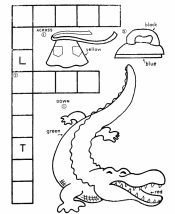|
|
Learning Vocabulary Words DirectlyStudents learn vocabulary directly when they are explicitly taught both individual words and word-learning strategies. Direct vocabulary instruction aids reading comprehension.Direct instruction helps students learn difficult words, such as words that represent complex concepts that are not part of the students' everyday experiences. Direct instruction of vocabulary relevant to a given text leads to a better reading comprehension. Teaching specific words before reading helps both vocabulary learning and reading comprehension. Before students read a text, it is helpful to teach them specific words they will see in the text. Teaching important vocabulary before reading can help students both learn new words and comprehend the text. Extended instruction that promotes active engagement with vocabulary improves word learning. Children learn words best when they are provided with instruction over an extended period of time and when that instruction has them work actively with the words. The more students use new words and the more they use them in different contexts, the more likely they are to learn the words. Repeated exposure to vocabulary in many contexts aids word learning. Students learn new words better when they encounter them often and in various contexts. The more children see, hear, and work with specific words, the better they seem to learn them. When teachers provide extended instruction that promotes active engagement, they give students repeated exposure to new words. When the students read those same words in their texts, they increase their exposure to the new words.
Free Printable Worksheets for Kids >>
| |||||||||
| |
| | | ||||||


